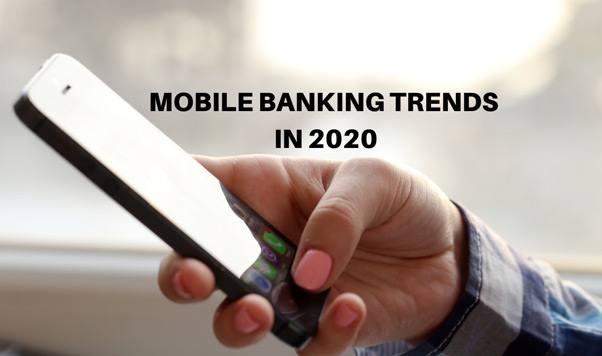Mobile Banking Trends in 2020
Updated On : January 2019
Mobile banking is set to take over all other banking channels put together. The convenience of banking anywhere anytime has given mobile banking a competitive edge. According to Juniper Research, mobile banking users will surpass 2 billion in 2020, making it roughly one in four people worldwide. Among other factors, the surge in mobile banking has been driven by convenience and solving pain points.
As mobile banking technology continues to grow and expand, let's look at the top global mobile banking trends to look out for in 2020.
-
Voice Payments Will Gain Popularity
Voice-activated commands are gaining ground with global consumers. With security being a high concern in Banking, voice recognition is being introduced as one of the methods for two-way authentication. Voice-first technology is also being used to provide access to private banking through smart devices like Alexa or Siri. Some individual banks are allowing customers to conduct money transfers to trusted payees, inquire about transactions, or report stolen cards, using voice only.
Gartner predicts, by 2020, nearly one-third of all browser searches will be screenless.
-
Big Data Will Help Fraud Detection
The risk of security increases for banks and financial institutions with an increase in revenues and services. According to Forbes, card losses alone could surpass $12 billion in 2020. Fortunately, the use of big data engines enables banks to safeguard their resources and protect their customers' identities. They can extract vast pools of customer data from various sources and improve risk assessment processes. The analysis could help to develop predictive models of fraud detection and also jump ahead of the competition by providing a streamlined customer experience.
-
Customer Service Will Improve With Machine Learning And Smart Bots
Offering highly personalized real-time experiences is a key differentiator for financial institutions. Despite 61% of customers making it known that they would switch banks if serviced poorly, 94% of banks have been unable to deliver on their personalization promise. Introducing machine learning and chatbots will enhance user experience with banking and keep customers loyal.
Smart Bots use machine learning, predictive analytics, and make better predictions and decisions than bank clerks so there will be deeper insights into consumer behaviour. This trend has developed with more banks adopting smart bots to give customers the personalization they desire efficiently.
-
Cardless ATM Withdrawals Will Continue To Grow
Cardless ATM withdrawals appeal to users for its speed and convenience. There are usually two ways available to withdraw money – through an app-generated code or near-field communication (NFC). The app generated code needs validating transactions with a QR code. In the use of NFC, the ATM sensor is tapped with the phone to withdraw money, without a card.
Cardless withdrawals help to reduce cloned card fraud, as all assets are safe with encrypted transactions.
-
Debt Payoffs Will Be Made With Paydown Apps
With the facility of overspending, debts have been building up. This mobile banking trend offers a fast and easy way to get back on track with finances. Several mobile savings apps and repayment tools help loan holders get a hold on their debt.
The round-up apps automatically round up a user's purchases to the nearest dollar and deposit the difference in the spender's savings account or toward paying off debt. Other debts lowering solutions help users better manage debt by providing detailed spending breakdowns, tracking debt and interests, and suggesting the optimal, customized payoff strategies.
-
Open Banking Will Expand Mobile Service Offering
Open banking enables banks to share user data with third-party providers through the use of open application programming interfaces (APIs). The aim is to create a complete personalized customer experience with a proliferation of new products and services.
Open banking helps to build a network of financial services accessible from a single integrated point of control chosen by the user. It provides a transparent view of one's finances, facilitates quick and direct payments, faster credit reporting, and improved user experience.
-
Blockchain In Banking Will Continue To Grow
Blockchain has evolved into a key enabler of transformation in the banking sector, including mobile. The banking and finance sector is the largest consumer of blockchain technology with high-profile institutions using it to improve efficiency, increase cost-effectiveness, and protect their assets better.
In the blockchain, transactions are closely monitored and visible to all participants in real-time, to enable data transparency and fraud reduction. It shortens transaction times and facilitates settlement and reconciliation.
-
Explosion Of Neo-Banks
Neo-banks, which are also known as mobile-only banks or challenger banks, are pushing the boundaries of innovation and technology. These institutions are breaking away from the norm and revolutionizing the way people bank on mobile phones.
Offering a seamless and smooth user experience, they are popular with the tech-savvy millennial demographic who are accustomed to using simple, intuitive and fun apps. These consumers prefer carrying out their financial tasks in the same way as they send text messages or swipe through their news feed. Neo-banks delivering on that is growing steadily as more and more users are flocking to them.


Comments :